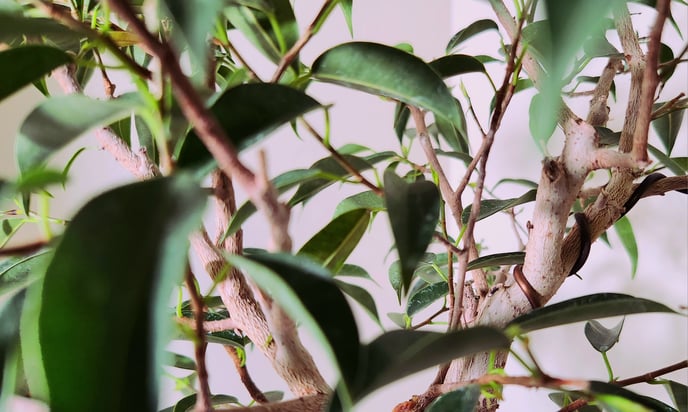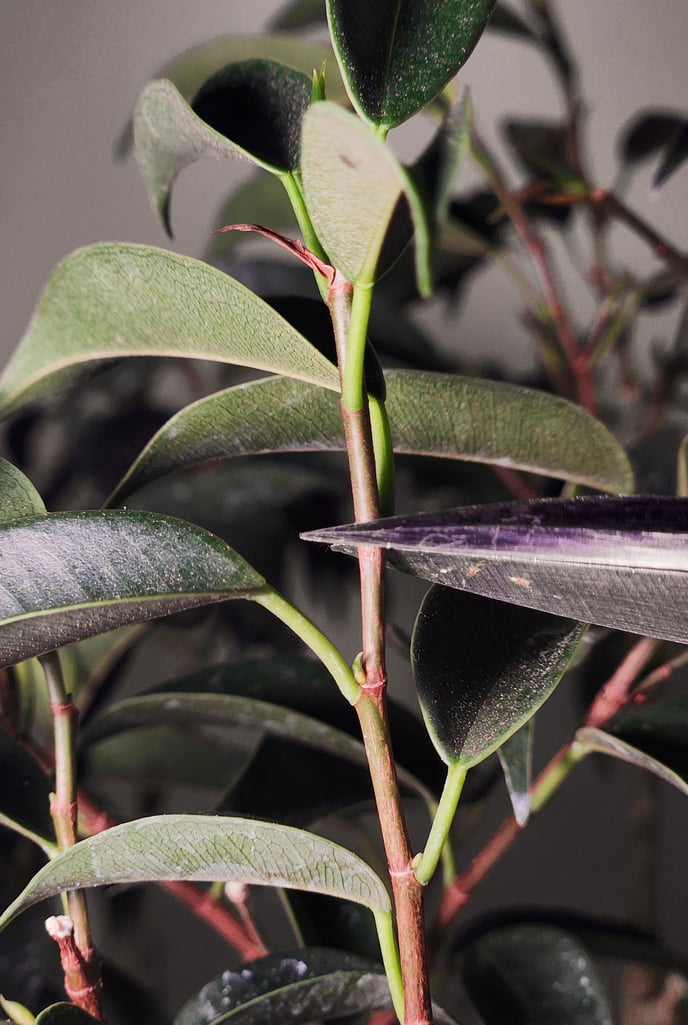General care and styling guidelines for your Ficus Retusa
 OVERVIEW + GENERAL CARE
OVERVIEW + GENERAL CARE
The Ficus Retusa is native to Southern and Eastern Asia. The Ficus Retusa is an evergreen shrub with deep green, waxy leaves that taper to a graceful point. The bark has subtle textural variations and is broken up by small eye-shaped marks, called lenticels, that actually aid the trees by providing supplementary gas exchange.
The Ficus Retusa does well as an indoor plant, and thrives above 60°F. In the Summer, they do well outdoors when the overnight temperature is above that mark. The more light provided, the smaller and denser your leaves will grow. When kept outdoors, be sure to check the soil moisture and apply water more often. Wind and summer heat can quickly dry the trees and heat the containers to conditions unsatisfactory for root growth.
Water your Ficus when the top layer of soil feels mostly dry. If the soil feels wet to the touch, check back later in the day or the next day. These trees shouldn’t be sitting in wet soil constantly, but also should never dry completely. Again, be sure to water more when the tree is kept outdoors.
It is best practice to fertilize regularly through the growing season and less frequently during the winter. The timeline for re-applying fertilizer is different depending on the type and brand, so be sure to follow directions closely. Any fertilizer c
an be used, but we recommend an organic liquid or solid fertilizer.
PRUNING + STYLING
The leaves on your Ficus Retusa grow spirally from each branch. Just like the other species we work with, new buds form in the axil, or where the stem of the leaf meets the branch. Note where you want new branches to begin growing and trim to leaves that will push buds in that direction.

When you trim your Ficus Retusa, it is best practice to leave the stem just after the last leaf on the branch. You want to leave a small amount of stem after your last leaf, just to allow the tree to compartmentalize the cut and redirect growth where you want it.
The branches of your Ficus divide and ramify beautifully. To create the best ramification, or branch division, allow your branches to develop 4-6 internodes, and trim back to leave 1-2 sets of leaves.
If your tree is good and healthy, the entire tree can be defoliated. To do this, trim off each leaf, leaving the petiole, or stem. The tree will push a new set of leaves across the entire canopy that is often smaller and more even in size. More buds may push on the interior of the tree as the inner branches and trunk are exposed to more sunlight.
